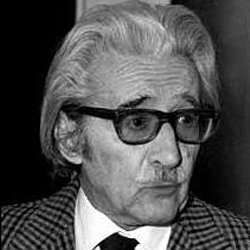Difference between revisions of "Edgardo Sogno"
(Italian gladio member - draft) |
m (adding pic) |
||
| Line 2: | Line 2: | ||
|wikipedia=https://en.wikipedia.org/wiki/Edgardo_Sogno | |wikipedia=https://en.wikipedia.org/wiki/Edgardo_Sogno | ||
|nationality=Italian | |nationality=Italian | ||
| + | |image=Edgardo Sogno1.jpg | ||
|birth_date=29 December 1915 | |birth_date=29 December 1915 | ||
|death_date= | |death_date= | ||
Revision as of 11:34, 25 August 2020
(diplomat, military) | |
|---|---|
 | |
| Born | 29 December 1915 |
| Nationality | Italian |
Count Edgardo Pietro Andrea Sogno Rata del Vallino di Ponzone was an Italian diplomat, partisan and political figure, from an aristocratic family. A feverent anti-communist, he was part of the planning, along with Luigi Cavallo and Randolfo Pacciardi, of the Golpe bianco ("white coup d'etat") in 1974.
Contents
Background
Descending from a family of ancient Savoy nobility originally from Camandona. After having obtained the classical high school diploma, in 1933 he entered the army and was appointed second lieutenant in the "Nizza Cavalry" Regiment. He then graduated in law and political science from the Politecnichal University in Torino. In 1938, for anti-communism as motivation, he took part in the Spanish Civil War. Although he served in the ranks of the pro-Francoists Italian volunteers, he was never a fascist , but a national liberal.
Opposition to fascism and the second world war
Also in 1938, in Turin , as a gesture of protest against the fascist racial laws, he pinned a yellow Star of David on his jacket (the distinctive sign imposed on Jews in Nazi Germany ) and showed himself in public. That was the year of the anti-fascist plot called for by the future Queen Maria José of Belgium , which planned (with the help of parts of the regime's military circles who did not want an alliance with the Nazis, including Galeazzo Ciano, Rodolfo Graziani, Pietro Badoglio and Dino Grandi) the deposition and arrest of Mussolini and abdication of the king.
In 1940 he entered the diplomatic service. In 1942 he was called to arms and transferred to France, but a year later, in May 1943 he was arrested in Nice on charges of high treason, for having publicly wished the military victory of the United States of America, but was then released on 25 July and discharged.
After the 8. September armisitice, Sogno crossed the front, making contact with the Royal Army which garrisoned the regions of the South and here, having established contact with the government of Vittorio Emanuele III , he took an active part in organizing a spy network at the order to free the northern regions now in the hands of the Germans.
He returned to the North thanks to the support of the British army and the British were his immediate contacts, through Radio London; his armed formation was aided with numerous drops of weapons and materials. Together with two companions, Sogno was initially parachuted from an English plane taken off from Tunisia, to create and direct the Organization Franchi, a monarchist military formation linked to the Intelligence Service, active since the winter of 1944. For a period he found himself at the Tenuta La Mandria supported by the owners, the marquisws of Medici del Vascello.
In the same period, Lieutenant Sogno, in weaving his spy network, also made contact with the Osoppo Brigade and, when the fate of the German forces now seemed to be sealed, from the beginning of 1945 he would have tried to start negotiations with the 10th MAS Flotilla of Prince Junio Valerio Borghese in order to coordinate and unite the efforts in a common front to stop the advance of the Yugoslav militias led by Tito in the eastern territories of Istria and the Julian area.
Political career after WW2
At the beginning of the fifties he published an anti-communist newspaper entitled " Peace and freedom ", which in 1953 was transformed, with US funding, into the homonymous movement, an Italian subsidiary of the French "Paix et liberté", directly linked to the CIA and financially supported by NATO, and chaired by the French deputy for the Republican, Radical and Radical-Socialist Party Jean Paul David.
The members of Peace and Freedom were nicknamed "Praetorians", as those of the Gladio Organization were the "gladiators". Luigi Cavallo also joined the group, started by former monarchist partisan and former Paris-correspondent of L'Unità, Colonel Ottorino Bonessa. Also part of the movement was Commissioner Dides, a man of the US services, responsible for the construction of a network parallel to the French police (the Dides network), which included the commissioners and inspectors purged after the fall of the Vichy regime and specially reinstated, which inspired interior minister Mario Scelba in the reorganization of the Italian Police.
Groups such as Peace and Freedom, often private but funded by NATO and the State Department, which had to engage in unorthodox warfare, especially psychological warfare and anti-communist propaganda, were born and were supported by the Italian government, with the approval of Alcide De Gasperi, as they were part of the agreements to be able to enter the Atlantic Pact (another of these groups was the Gladio Organization, which, however, was not private, but directly composed of state employees) and enjoyed economic aid and US protection.